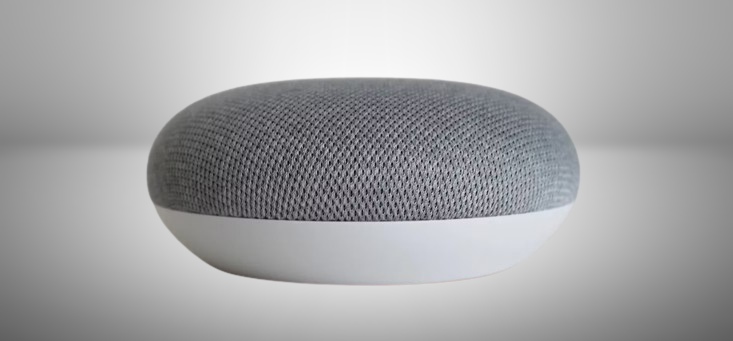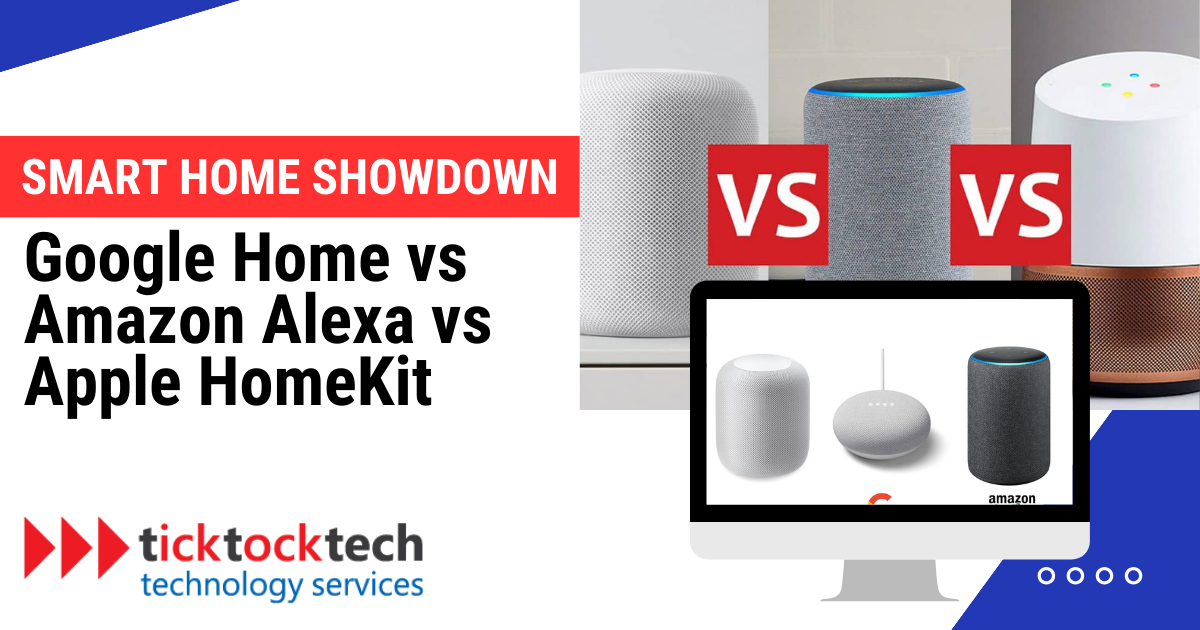Smart home systems have gained popularity in recent years because of their convenience. They offer several features that make it very easy to control your environment, from lighting and temperature to entertainment and security. In this post, we will compare the three most popular smart home systems: Google Home, Amazon Alexa, and Apple HomeKit. Read on to learn more.
Google Home

Google Home stands out among the wide range of smart home systems available. It is renowned for its versatility and user-friendly design, making it a popular choice for many. With an impressive list of features and seamless integration with Google products, it has become a top choice for smart home enthusiasts.
Google Home Features
Google Home offers many features structured to simplify and enhance your daily life features. Let’s explore some of its standout capabilities:
1. Voice Control
With Google Home, you can control your smart home devices with just your voice. You can do it all with simple voice commands, whether you want to command your lights to dance or adjust the thermostat settings.
2. Multi-room Audio
Create a harmonious home with Google Home’s multi-room audio support. Google Home also supports multi-room audio, allowing you to play the same song on all your connected devices or different songs in different rooms.
3. Google Assistant
In addition to its voice control and muti-room audio features, Google Home is powered by Google Assistant. This AI-powered assistant uses natural language capabilities to answer questions, set reminders, and help you with your daily routine.
4. Smart Home Integration
Google Home is more than a standalone device; it seamlessly integrates with other smart home devices. From Nest thermostats to Philips Hue lights and SmartThings hubs, it creates a connected ecosystem to run your smart home smoothly.
Pros and Cons of Google Home
Pros:
- Seamless integration with Google products.
- Responsive voice recognition technology.
- Compatibility with many smart home devices.
Cons:
- Limited multi-room support
- No built-in video display
Amazon Alexa

Amazon Alexa is more than just a digital assistant, it is a central hub to connect all your smart home devices. Alexa is Amazon’s virtual assistant, embedded in devices such as the Echo smart speaker, Echo Dot, Echo Show, and more. With Alexa, you can control your smart home devices, stay informed about the latest trends, play music, and much more.
Amazon Alexa Features
Alexa has many capabilities, making it the most popular virtual assistant in the market. Here are some of the things Alexa can do for you:
1. Personalized Voice Assistant Experience
With an emphasis on personalization, Alexa takes the voice assistant experience to new heights by recognizing up to 10 voices. This means you can enjoy customized interactions tailored to your preferences and needs.
2. Top-notch Compatibility and Skills
Alexa is versatile with its compatibility. It seamlessly connects with several smart home devices, enhancing your smart home experience to new heights. Additionally, Alexa boasts an impressive library of skills, with more than 100,000 unique skills available. These skills extend Alexa’s functionality for performing tasks such as controlling smart home devices, ordering items, and playing games.
3. Alexa for Business
Alexa for Business goes beyond the home environment. Amazon Alexa offers enhancements to make your experience more versatile in professional settings. These targeted features expand Alexa’s utility beyond the smart home, allowing businesses to leverage its capabilities to boost efficiency.
4. Video Display
Amazon Echo Show and Echo Show 5 feature video displays to make calls, watch videos, and even check security cameras.
5. Multi-room Audio
Alexa also supports multi-room audio, allowing you to play the same song on all your connected devices or different songs in different rooms.
Pros and Cons of Amazon Alexa
Pros:
- Open Ecosystem
- Compatibility with several smart home devices.
- Video Display
- Robust Skill Set
Cons:
- No Google Assistant.
- Alexa sometimes struggles to understand certain accents.
Apple HomeKit

Apple HomeKit stands out for its commitment to security and privacy. While it might not be as popular as the rest mentioned in this article, Apple HomeKit has its own unique features that make it a compelling choice for users.
Apple HomeKit Features
Apple HomeKit offers many features that set it apart from other smart home technologies. Here are some of the distinctive features:
1. Integration with Apple Devices
HomeKit seamlessly integrates with all Apple devices. This allows users to control their smart home devices using Siri (Apple’s voice assistant).
2. Robust Security and Privacy
Apple HomeKit prioritizes data security and privacy. It stores user information and smart home data locally on the user’s devices to prevent unauthorized access.
3. Hub Devices for Centralized Control
HomeKit utilizes hub devices like the Apple HomePod Mini or Apple TV, which act as central controllers for the smart home ecosystem. These hubs enable centralized control and communication between various devices, enhancing the overall smart home experience.
4. Scenes and Automation
HomeKit allows users to create scenes and automation. Scenes enable users to customize and control multiple devices simultaneously with a single command or trigger, while automation automates tasks based on predefined conditions or triggers.
5. Remote Access and Control
With HomeKit, users can remotely access and control their smart home devices using their Apple devices. Whether they are away from home or in a different room, users can securely monitor and manage their smart home remotely using the Home app or Siri commands.
6. Broad Language Support
HomeKit supports different languages, making it accessible to use anywhere. Siri, as the voice assistant for HomeKit, can understand and respond to commands in multiple languages.
Pros and Cons of Amazon Alexa
Pros:
- Robust security and privacy measures.
- Broad language support.
- Integration with an Apple TV as a hub.
- Seamless integration with Apple Watch for control and alerts.
Cons:
- Limited selection of compatible devices compared to competitors.
- A closed ecosystem with a slower pace of innovation.
- Implementation can be costly as it requires iOS devices.
- Limited options for smart speakers and displays.
Google Home vs. Amazon Alexa vs. Apple HomeKit
Choosing between Google Home, Amazon Alexa, and Apple HomeKit is mainly based on individual preferences and priorities. Alexa dominates in terms of compatibility, Google Home’s voice assistant is the smartest, and Apple HomeKit excels in security and privacy. As the competition progresses, it will be interesting to see how these systems evolve and continue to shape the future of smart home technology.

